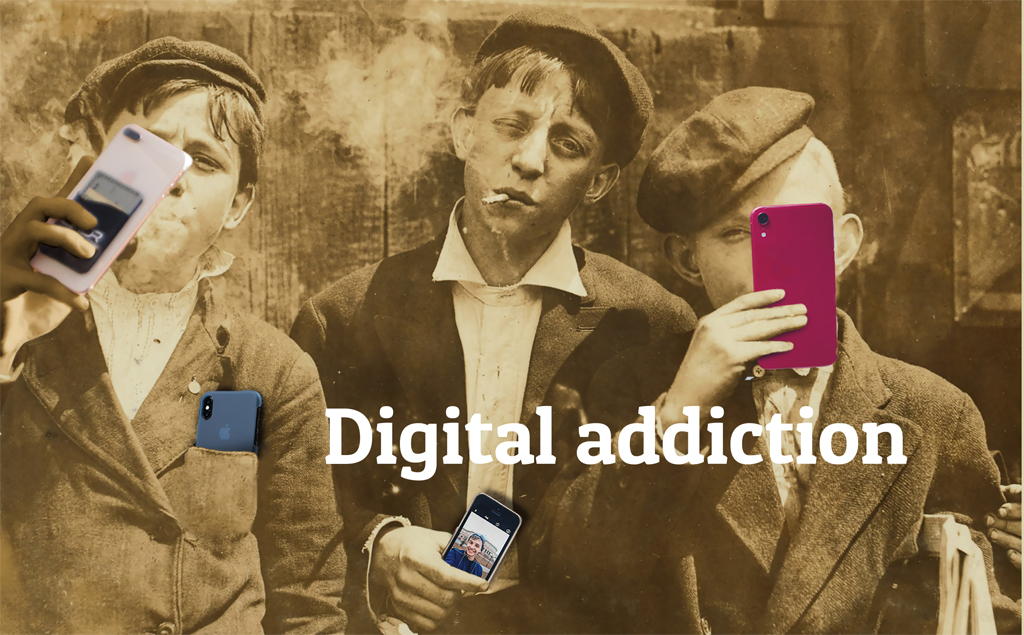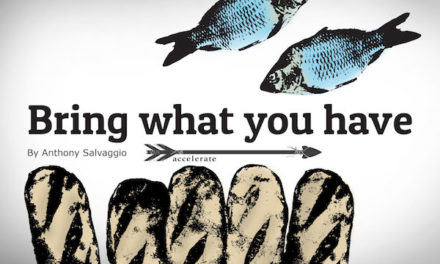Recently I have been doing lots of research on screen time, social media, and their effects on the human brain and our society. In youth group the teens and leaders watched a documentary together called “Connect” by Kirk Cameron that is currently on Netflix.
This documentary does a great job addressing the current trend and issues related to excessive screen time in teens. It also gives parents a biblical view on how to address this ever-growing concern. It provides parents and their children with real world examples of the great damage social media can cause in the life a teen, young adult, and a family.
It is my belief that screen time on smart phones and tablets are the new cigarettes. Why do I say this? In the 1940’s – 1950’s everyone smoked – famous people, rich people, poor people, male, female and all races. Back then they did not have the data to known the damage they were all doing to their bodies. They where unaware that cigarettes would cause cancer. In 2019 we have all the data backed by large research studies that include images and case studies to show the damaging effects cigarettes have.
In the twenty-first century enter smartphones and tablets. Everyone uses them and they are used excessively. We are now just starting to gather some data on what the effects are of using these devices specifically when gaming, using social media, and looking at pornography.
Have you ever been out to eat or at a family get together and when you look around the room you notice that rather than talking almost everyone is looking down at their phones? It is very common in 2019 for people, especially teens and young adults, to be more connected with their devices than with people. That’s not to say this behavior is limited to these age groups, but it is just more prevalent in teens and young adults.
In researching all of this I uncovered that over the last 10 years (2008-2018) the two age groups that have seen the largest growth of social media users are in the age ranges of 30-49 and 50-64. In May 2008, 21% of adults ages 30-49 said they used at least one social media site regularly. In January 2018 that number rose by 57% to a staggering 78% of adults 30-49 stating they use at least one social media site regularly. In May 2008, 7% of adults ages 50-64 said they used at least one social media site regularly. In January 2018 that number rose by 57% to a total of 64%. And in that same time frame, adults ages 65+ rose from 2% stating they used social media regularly to 37%, an increase of 35% in ten years in the 65+ crowd! (Source: https://www.pewinternet.org/fact-sheet/social-media/)
Why is this happening? Why are people so consumed and connected to their devices to the point they are disconnected from other people?
During screen time usage our brains release dopamine, a chemical that makes us feel pleasure. The challenge is that we can become addicted to the rush associated with dopamine, which can make anyone, especially kids, more dependent on their electronic devices. Screen time tends to generate the release of more dopamine than your brain would normally release if you were having a conversation with someone or listening to a teacher teach. Social media, video games, and pornography trigger the release of high amounts of dopamine in the brain – so much so that your brain begins to build up a tolerance to the dopamine. This tolerance, as with a drug, will cause you to need more in order to obtain the same desired reaction; that is, more dopamine to feel pleasure causing you to need/desire more and more. This creates an addiction to the technology.
What are some signs of digital addiction?
1- Anger. People who have a digital addiction will deal with random bouts of anger, especially when they are not getting enough screen time. This happens because in normal, everyday life and interactions their brain is not releasing enough dopamine to satisfy their desire.
2- Anxiety and Depression. Over time the digitally addicted will become anxious, almost as if they can’t breathe or focus if they don’t get their fix. This anxiety leads to depression.
3- Emotional Numbness (Anhedonia). When the pleasure center of the brain is continually overloaded a person can become emotionally numb. The addicted person can reach a level when they cannot create enough dopamine to feel pleasure any longer so they begin to lack the ability to feel.
I want to end this article with a verse and some resources for you. The verse is 1 Corinthians 6:12: “All things are lawful for me, but not all things are helpful. All things are lawful for me, but I will not be dominated by anything.” (ESV) As Christians we have freedom and liberty in Christ, but we should not let anything besides Christ be our master.
Some great resources on this topic are:
Kirk Cameron’s “Connect”, which is currently on Netflix. I also have copy if you would like to briefly borrow it.
Heart Light Ministries – If you know someone who is or may be dealing with digital addiction, this is a ministry created to provide help for all ages: https://www.heartlightministries.org.
“Digital Cocaine” – Brad Huddleston. Brad has a few great books he has written on the topic as well as some free youtube videos that are fantastic! Here is the youtube link: https://www.youtube.com/watch?v=dj0fEw8_4Tw&feature=youtu.be






